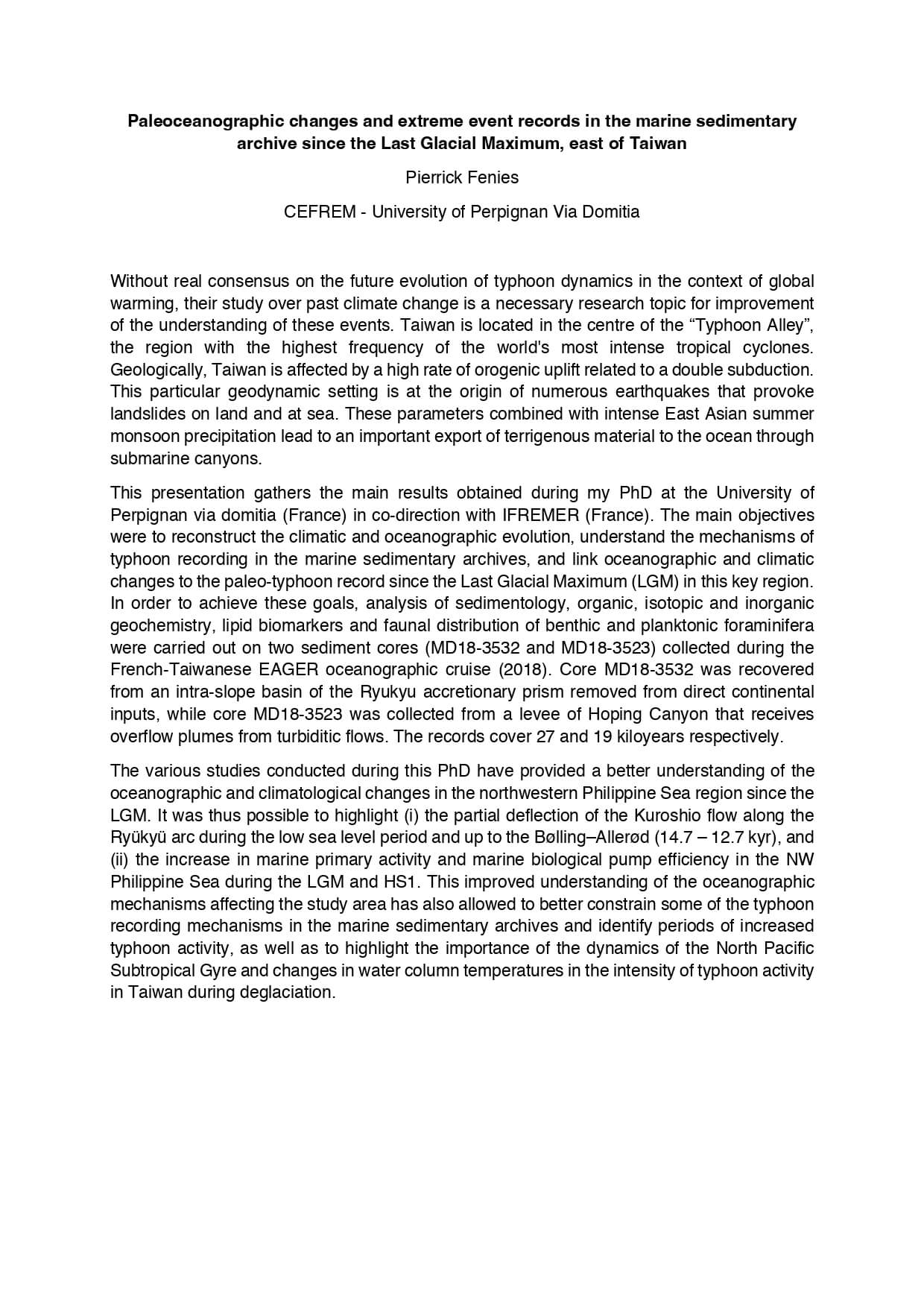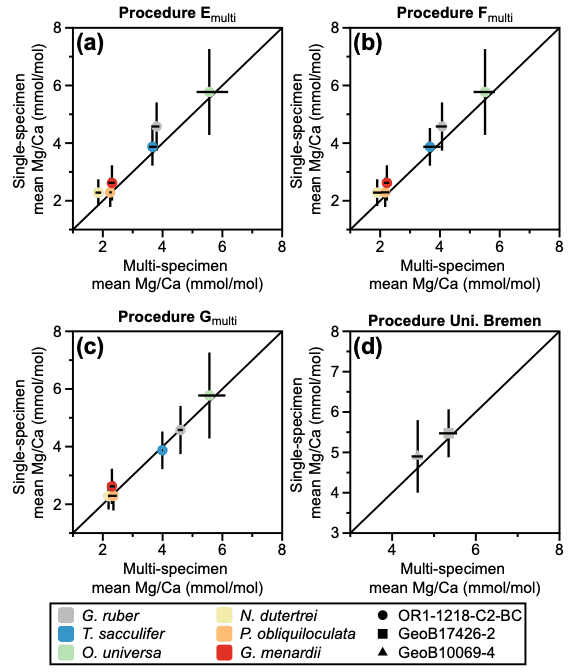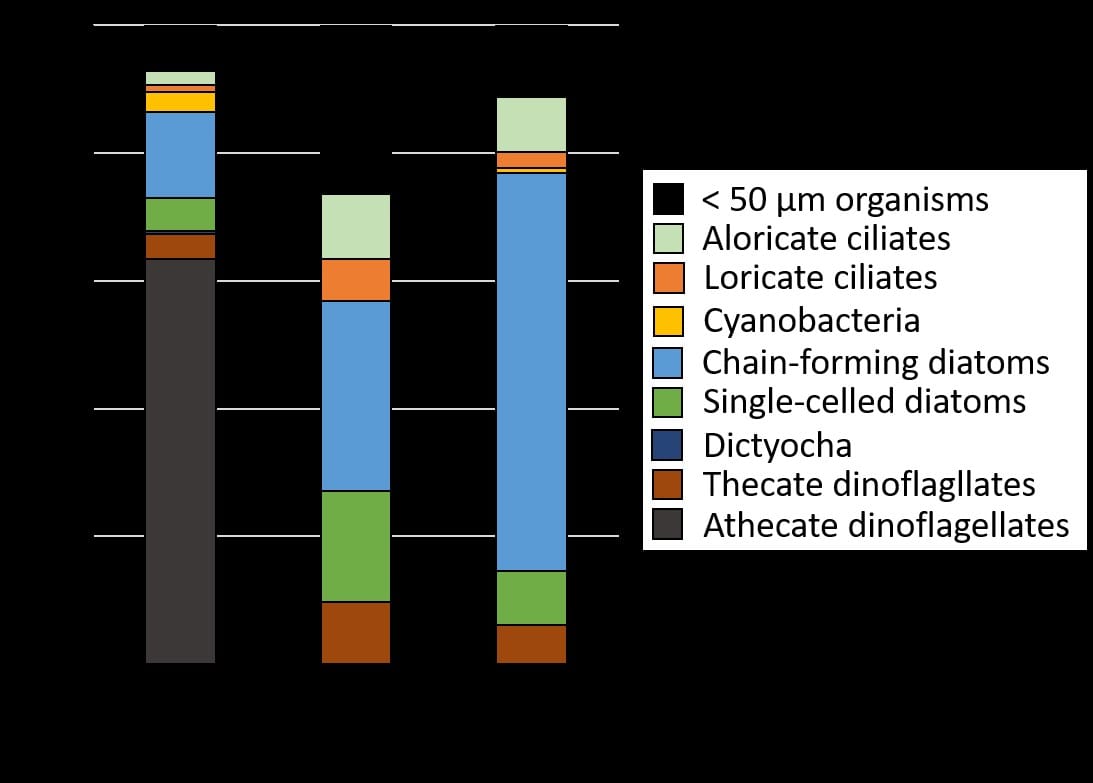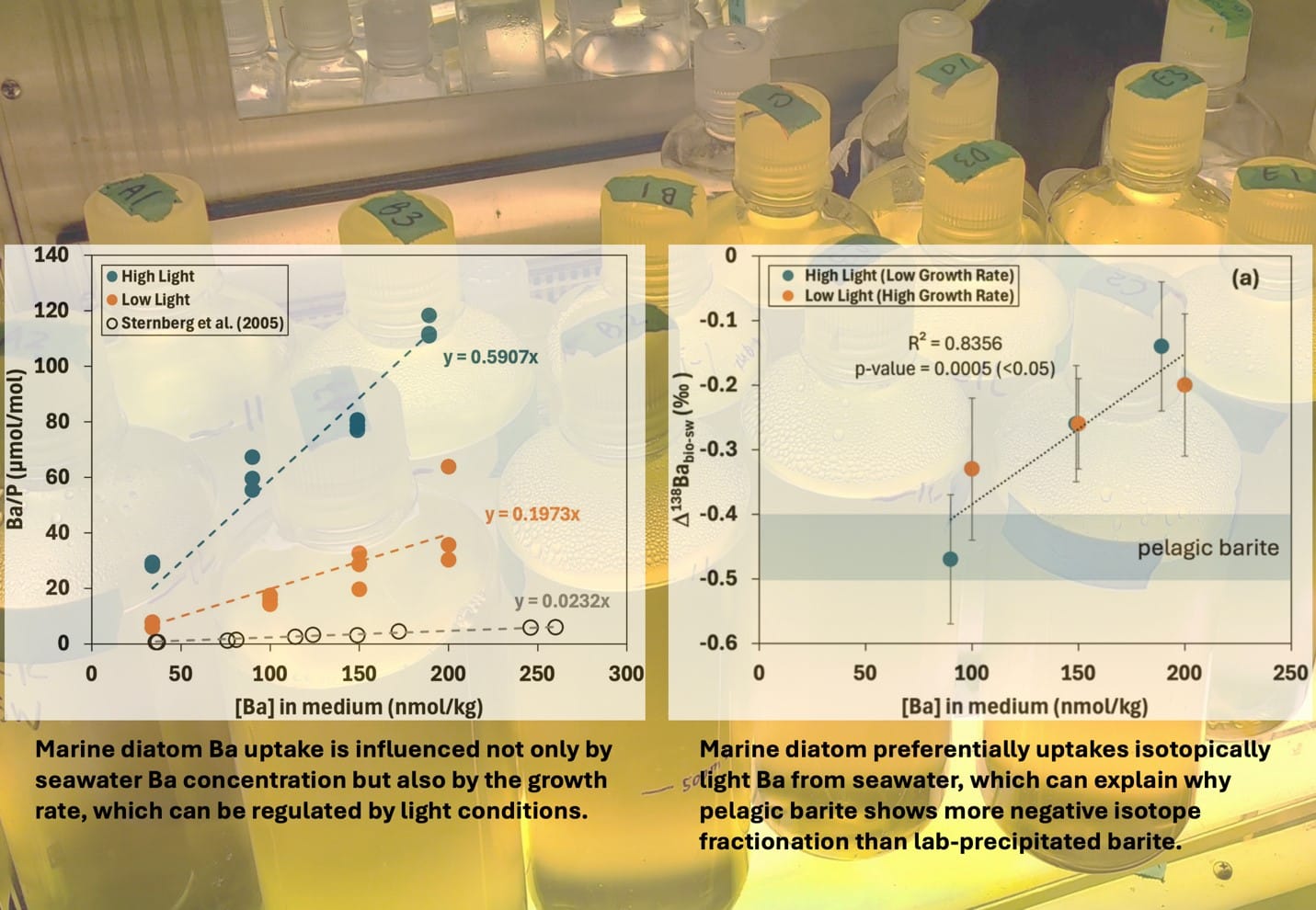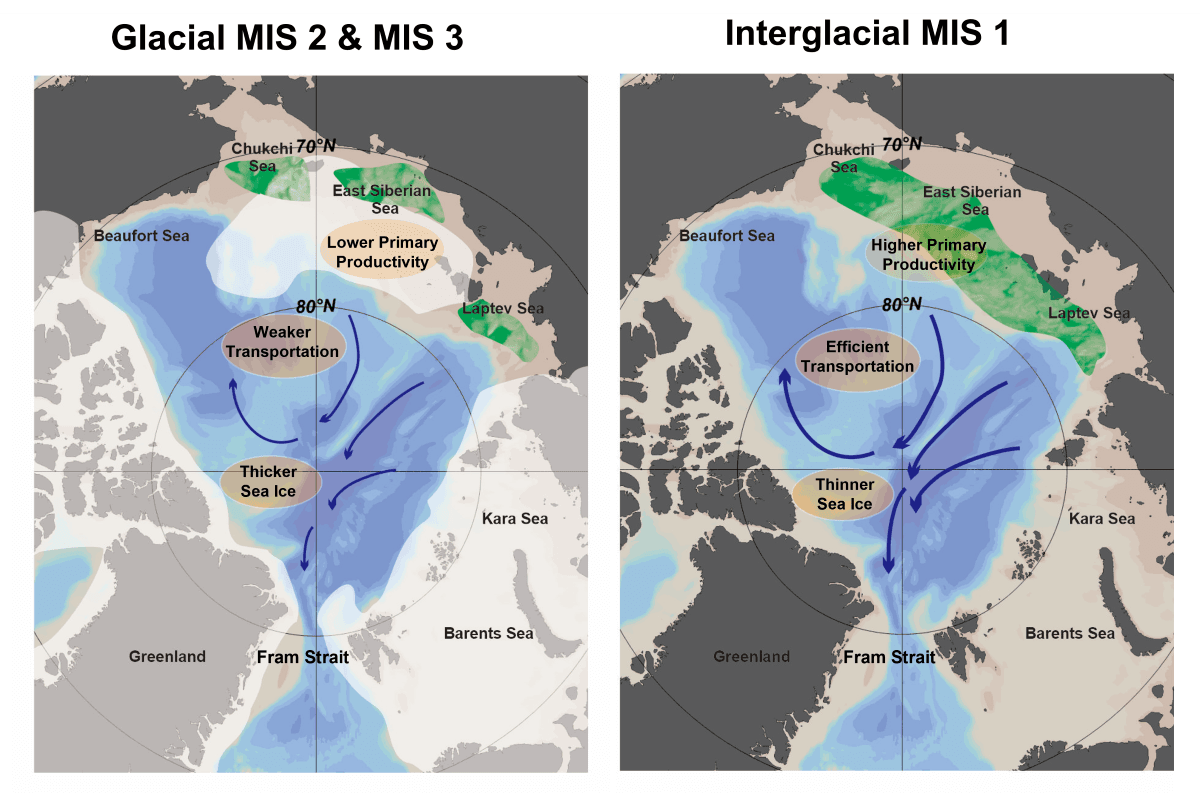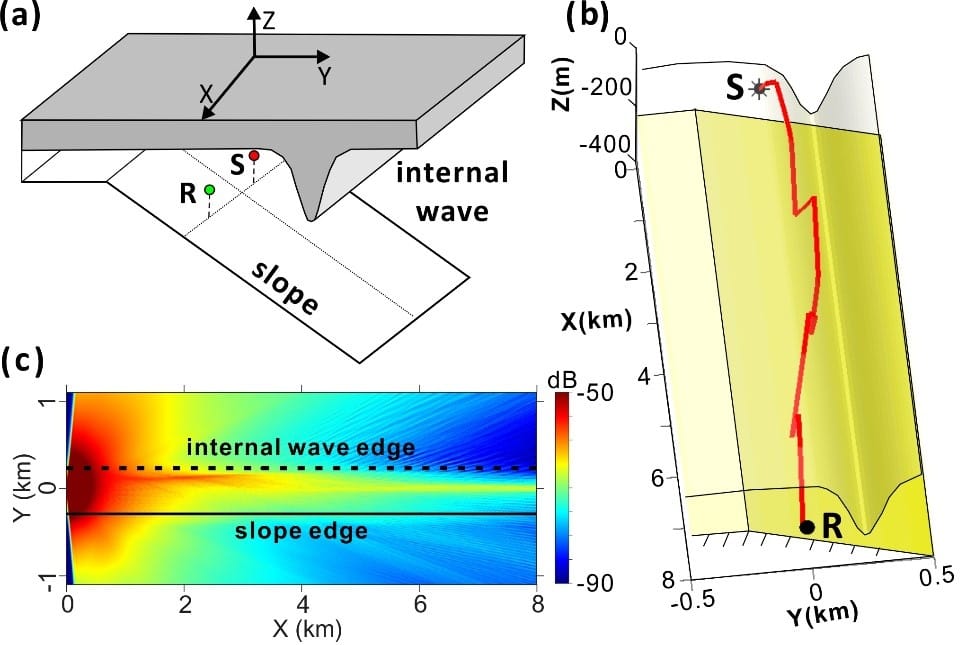Paleoceanographic changes and extreme event records in the marine sedimentary archive since the Last Glacial Maximum, east of Taiwan.
講者:Dr. Pierrick Fenies (CEFREM – University of Perpignan Via Domitia)
時間:5月11日(四) 16:00~17:00
地點:海洋所2樓R215會議室
Pierrick Fenies
CEFREM – University of Perpignan Via Domitia
Without real consensus on the future evolution of typhoon dynamics in the context of global warming, their study over past climate change is a necessary research topic for improvement of the understanding of these events. Taiwan is located in the centre of the “Typhoon Alley”, the region with the highest frequency of the world’s most intense tropical cyclones. Geologically, Taiwan is affected by a high rate of orogenic uplift related to a double subduction. This particular geodynamic setting is at the origin of numerous earthquakes that provoke landslides on land and at sea. These parameters combined with intense East Asian summer monsoon precipitation lead to an important export of terrigenous material to the ocean through submarine canyons.
This presentation gathers the main results obtained during my PhD at the University of Perpignan via domitia (France) in co-direction with IFREMER (France). The main objectives were to reconstruct the climatic and oceanographic evolution, understand the mechanisms of typhoon recording in the marine sedimentary archives, and link oceanographic and climatic changes to the paleo-typhoon record since the Last Glacial Maximum (LGM) in this key region. In order to achieve these goals, analysis of sedimentology, organic, isotopic and inorganic geochemistry, lipid biomarkers and faunal distribution of benthic and planktonic foraminifera were carried out on two sediment cores (MD18-3532 and MD18-3523) collected during the French-Taiwanese EAGER oceanographic cruise (2018). Core MD18-3532 was recovered from an intra-slope basin of the Ryukyu accretionary prism removed from direct continental inputs, while core MD18-3523 was collected from a levee of Hoping Canyon that receives overflow plumes from turbiditic flows. The records cover 27 and 19 kiloyears respectively. The various studies conducted during this PhD have provided a better understanding of the oceanographic and climatological changes in the northwestern Philippine Sea region since the LGM. It was thus possible to highlight (i) the partial deflection of the Kuroshio flow along the Ryükyü arc during the low sea level period and up to the Bolling-Allerød (14.7 -12.7 kyr), and (ii) the increase in marine primary activity and marine biological pump efficiency in the NW Philippine Sea during the LGM and HS1. This improved understanding of the oceanographic mechanisms affecting the study area has also allowed to better constrain some of the typhoon recording mechanisms in the marine sedimentary archives and identify periods of increased typhoon activity, as well as to highlight the importance of the dynamics of the North Pacific Subtropical Gyre and changes in water column temperatures in the intensity of typhoon activity in Taiwan during deglaciation.
